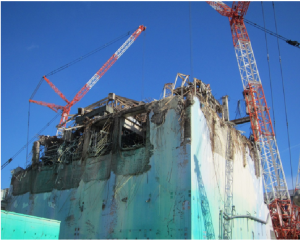Analyses with EPRI Software Yield Critical Lessons to Help Improve Nuclear Plant Design and Accident Response Guidelines
As the accident at Japan’s Fukushima Daiichi nuclear power plant was still unfolding four years ago, EPRI technical staff turned to a familiar tool to better understand what was occurring. The Modular Accident Analysis Program, or MAAP, software is used to quickly analyze the progression of events during an accident. “Severe accidents are complicated, and it’s helpful to have a code like MAAP that can capture the many possibilities without taking a long time to run,” said EPRI Fellow Rosa Yang.
Unlike other codes, MAAP runs faster than accidents progress, so it can be used during an event to guide emergency responders. Originally developed after the 1979 Three Mile Island accident and now in its fifth version, the tool has informed changes to industry guidelines that plant operators use to respond to accidents. Operators also use MAAP to identify priority safety concerns to address, helping to prevent accidents.
Lessons for the Global Nuclear Industry

Because Fukushima lost power soon after the event started, there are virtually no plant data from the accident’s early hours—which would be critical for understanding its progression. MAAP has filled in many of those gaps. In the years since the accident, EPRI has used MAAP to help plant operators and policymakers better understand what took place during those initial hours. These analyses have yielded critical lessons to help the global nuclear industry improve plant design and accident response guidelines.
The loss of power during the accident made it impossible to deploy cooling measures to prevent reactor meltdowns and radioactive material releases. One lesson from MAAP: Plant operators need a detailed strategy for using portable equipment, such as pumps to inject cooling water into hot reactors. Such strategies should include procedures and guidelines that “buy time” for plant operators to retrieve the equipment. For boiling water reactor nuclear plants such as Fukushima, this might involve devising a way for the plant’s existing reactor core isolation cooling system to function temporarily after a loss of power.
“You can reconfigure plants to make existing equipment available long enough so workers can go to a protected warehouse and get portable pumps or power supplies for a sustained recovery,” said EPRI Principal Technical Leader Rick Wachowiak. “Nearly all nuclear utilities in the United States use MAAP analyses to develop the portable equipment plans they submit to regulators.”
EPRI’s MAAP analyses of Fukushima also bolstered the growing industry consensus that adding water to a damaged reactor core is essential to prevent the release of radioactive material.
Decommissioning and Lasting Change
Tokyo Electric Power Company is using MAAP results and data collected from the site to accurately estimate where the Fukushima reactor cores are physically located now and to determine how extensively they are damaged—vital information for plant decommissioning.
Lessons from the MAAP Fukushima analyses have been incorporated into EPRI’s severe accident management guidelines, which help plant operators prepare for and navigate accidents. Since Fukushima, plant operators and regulators around the world have aggressively sought to better understand plant vulnerabilities. They have used MAAP to evaluate the effectiveness of new safety equipment and procedures and to conduct plant stress tests.
MAAP itself has been updated based on Fukushima lessons. For example, the latest version includes modeling options to better understand the use of vents to reduce reactor core pressure during an accident.
“All nuclear plants worldwide are safer today than before March 2011 because of all we have learned from Fukushima,” said Yang.
EPRI Technical Experts:
Richard Wachowiak, Rosa Yang, Kelli Voelsing


